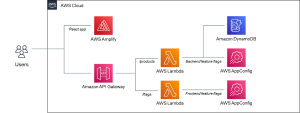
“Cloud whiplash” refers to the challenges and rapid changes organizations face while adopting and managing cloud computing infrastructures. The term captures the often disorienting and disruptive shifts as enterprises try to keep up with rapidly evolving technologies, varied cloud services, and changing business requirements.
Cloud whiplash is usually due to frequent changes in cloud strategies, resulting in inefficiencies, security vulnerabilities, and operational disruptions. An example would be the security team needing a cloud security plan when applications are redeployed in a public cloud. The stress of not having the work done or the resources to do the job is the foundation of cloud whiplash.
Working together
A strategic approach is necessary to improve operational economics and outcomes and effectively manage these challenges. Consulting organizations have processes for operating model changes, skills adaptation, and other $1,000-an-hour concepts, but fundamentally, it comes down to everyone working together.
Typically, when I see an enterprise suffering from cloud whiplash, I find siloed organizations that are not working together for a common business goal. Indeed, the operations and security teams often believe that the use of public clouds has been thrust upon them without their consent. Not given sufficient heads-up and often not given adequate resources, including funding, they feel set up for failure—and they are not entirely wrong.
So, how the heck do you avoid this? It’s more of a people issue than a technology issue.
Define the business’s needs. While this may seem obvious, it’s often overlooked. Many enterprises need a clearer sense of their objectives and requirements before adopting cloud services. Otherwise they end up with mismatched services that don’t align well with the company’s operational goals. I see ops teams that are not ready to run cloud systems and security teams that are just as ill-prepared. Finance teams have no idea how to keep track of cloud costs, and legal departments are not up to speed on compliance as related to cloud systems.
Enterprises need a detailed assessment of their current and future needs: workload types, data privacy requirements, compliance obligations, and performance expectations. With a comprehensive understanding of these factors, they can make more informed choices about which cloud services and providers will most effectively meet their needs.
Develop a clear cloud strategy. Yes, this is another obvious step. A good strategy outlines objectives, governance policies, security protocols, and financial management techniques. This also means creating a hybrid or multicloud strategy that knits various services into a cohesive operational model. A well-documented cloud strategy enables better decision-making and provides a road map for your cloud adoption journey.
Often, businesses think about this stuff but don’t write it down. This leads to misunderstandings as people are promoted, transferred, or leave the company. A written record also serves as a source of agreement for all those invested in making cloud computing successful.
Adopt strong governance policies. Effectively navigating the cloud requires usage policies that all can agree upon. These policies should cover data management, security measures, compliance, and cost control. They should establish clear protocols for provisioning and deprovisioning resources to avoid sprawl and wasted expenditures.
Invest in training and skills development. One key cause of cloud whiplash is inadequate organizational skills and knowledge. Investing in training and skill development can ensure your staff is equipped to manage cloud services effectively.
I often do skill assessment planning when doing a large cloud migration. This is very telling. Most enterprises don’t or won’t have the skills needed to be effective with their new cloud deployment. I’ve been known to stop migration until a plan is underway to address skills gaps. Else, you’ll end up failing.
Leverage automation and AI that can play a pivotal role in reducing cloud whiplash. Automated processes can handle routine tasks more efficiently, minimizing human error and freeing your staff to focus on more strategic activities.
Automation is really a savior. It means that we’re not forced to put people on everyone’s new process, it’s changeable centrally, and while expensive to deploy, it’s cheap to run. My rule of thumb has been to automate everything that I can, even if it takes more time and money. However, the team is often suspicious, considering that we’re often automating jobs that humans were doing. They are just going to have to get over that.
Finally, foster a culture of agility. Thriving in the dynamic cloud landscape, or any high-tech landscape for that matter (including AI) takes a mindset that embraces change and innovation. This cultural shift requires leadership commitment and a willingness to experiment with new approaches.
Set up cross-functional teams to facilitate better collaboration and quicker decision-making. By cultivating an adaptable organization, you can more effectively respond to the fast-changing cloud environment and mitigate the effects of whiplash.
Does most of my advice seem like common sense? It’s not. Most enterprises are doing things wrong, often making excuses such as leadership pressure, lack of resources, or other things that are hard to fix. Leadership must be on board with this, including slowing down and spending more. You’ll win in the end, trust me.
Copyright © 2024 IDG Communications, Inc.

